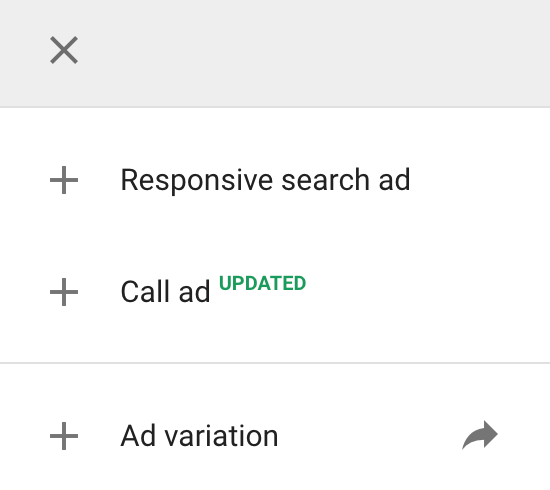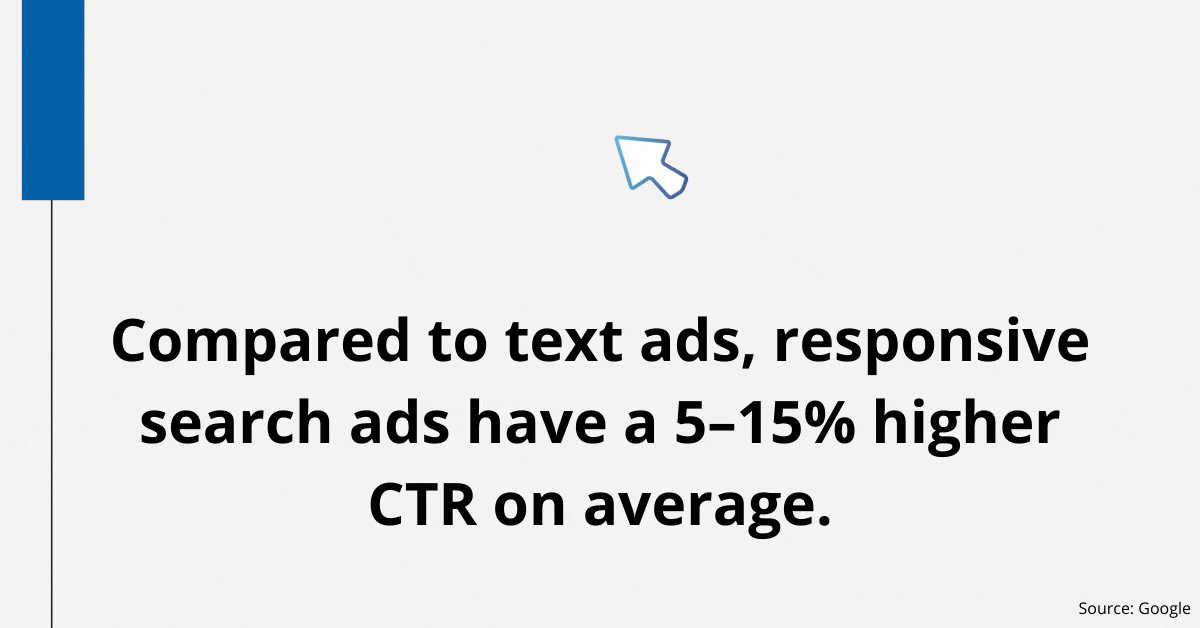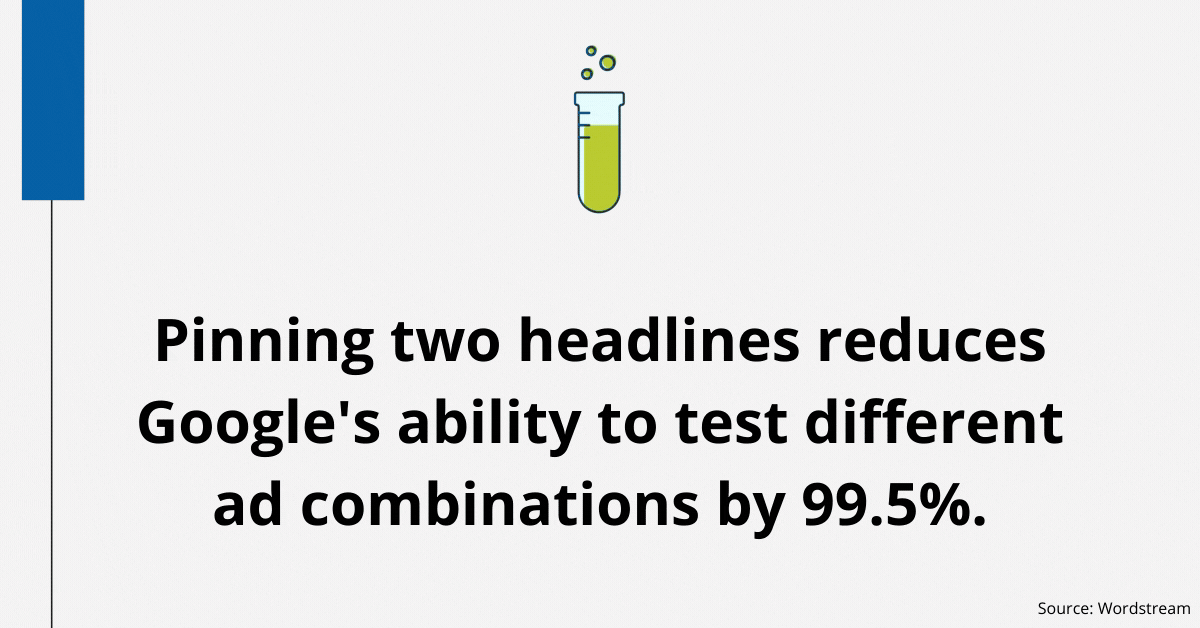Some advertisers have noticed a recent change in their Google Ads search campaigns. When they click to create a new ad, there is no longer an option to create a text ad. Instead, Google only lets advertisers choose from responsive search ads or call ads.

If you click to create a new responsive search ad, Google does give you the option to switch back to a regular text ad format.
However, as of September 2021, there is a notice stating that advertisers will no longer be able to create or edit expanded text ads starting June 30, 2022.

Text Ads are Officially Phasing Out
Given the success of responsive search ads, many marketers had speculated that Google would eventually phase out the expanded text ad format. However, it had not been confirmed until now.
This will undoubtedly be a paradigm shift for many advertisers, especially those who haven’t yet embraced Google’s responsive ad formats.
Below, we outline what you can do to prepare for this upcoming shift.
What are Responsive Search Ads?
Responsive search ads are a relatively new ad format in which advertisers provide a wide variety of headlines and descriptions. Google then mixes and matches those assets, testing different ad combinations and learning over time which are most effective.
Although you can provide up to 15 headlines and 4 descriptions, responsive search ads appear just like traditional text ads on the SERP. However, there are numerous variations of the same ad that a user could see.
One significant advantage of responsive search ads is that they optimize over time. Rather than having to write copy for multiple text ads then monitor their metrics and make manual edits to improve performance, responsive search ads allow you to create one single ad that can appear many different ways and optimizes automatically.
This maximizes ad performance while also saving time. Learn more about responsive search ads here.

How Will This Impact My Campaigns?
One of the main impacts of this shift will be control over ad copy. With responsive search ads, you have less control over the exact way your ads will appear on the SERP than you do with text ads.
Because Google mixes and matches the ad copy you provide, there are many different ways your ad can show up on the SERP. An ad may show a certain way to one user, then show completely different headlines the next time it appears.
That being said, you will still retain complete control over the ad copy that is available for Google to use. You’ll provide the headlines and descriptions from which Google can choose. But unlike text ads, where you know what the first, second and third headlines will be, as well as the first and second descriptions, responsive search ads can show any combination of the headlines and descriptions that you provided.
However, there is an option to pin headlines and descriptions in certain positions. For example, if you want your brand name to be visible in all your ads, you could pin that headline so it will always appear in the first position.
Note that this does reduce Google’s ability to optimize performance through mixing and matching your various assets in all available positions.
In fact, according to Wordstream, pinning two headlines in the same ad reduces Google’s ability to test by 99.5%.
Still, pinning may be an enticing option for advertisers who want to showcase their brand or highlight a special offer. In these cases, only pinning one asset is probably the best approach in order to give you a certain level of control over your ad copy, while still allowing Google to work its machine learning magic.

How Can I Prepare for Google Phasing Out RSAs?
Now that we know responsive search ads are replacing text ads, there are several things advertisers can do to prepare.
First, if you haven’t already, you should start using responsive search ads. Familiarize yourself and your staff with the copywriting and ad setup processes.
Then, monitor how these ads perform in your campaigns.
Once they’ve run for around 30 days, compare CTR, conversion volume, and other key metrics to those of your text ads. If needed, make adjustments to your responsive ads, such as adding more keywords into your descriptions or trying out a new call to action in your headlines.
Furthermore, test features like location insertion or keyword insertion and see how they impact performance.
Learning what works well for your responsive search ads and what doesn’t will help you in the long run, especially once they become the primary search ad format in Google Ads.
When Will This Change Take Place?
You will be able to continue creating new text ads and editing existing text ads until June 30, 2022. Given that text ads have been the standard ad format in search campaigns for so long, Google is offering advertisers ample notice about this shift.
However, it’s best to start preparing now. Furthermore, advertisers should monitor their accounts for any new ad formats that Google may introduce in the coming months to complement responsive search ads.
Do you need help managing your PPC campaigns? Explore Creative Website Marketing’s managed PPC services today.

